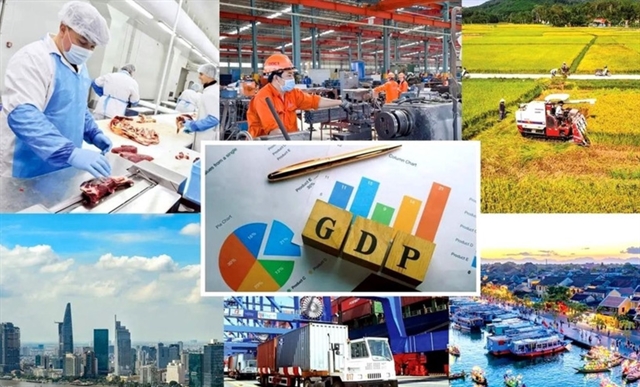 Society
Society

The country generates large quantities of shrimp by-products from which high-value products can be made, but their potential has not been exploited since neither State-owned agencies nor private players have bothered to invest enough in research or processing, experts have said.
 |
| Farmers harvest white-legged shrimp in the Mekong Delta province of Bạc Liêu. – VNA/VNS Photo Huỳnh Sử |
HCM CITY — The potential of large quantities of shrimp by-products from which high-value products can be made has not been exploited since neither State-owned agencies nor private players have bothered to invest enough in research or processing, experts have said.
Shrimp output was more than 720,000 tonnes last year, and the processing industry produced 320,000 tonnes of by-products from them, mostly in the form of heads and shells.
Shrimp heads and shells can be used as raw materials for producing high-value products like chitosan, which is widely used in food, agriculture, bio-technology, cosmetics, medicines, and waste treatment.
Speaking at a seminar held in Cần Thơ City on Wednesday, Trang Sỹ Trung, principal of Nha Trang University, said the quantity of shrimp by-products would continue to increase in the coming years and reach an estimated 500,000 tonnes by 2025.
But shrimp heads and shells are still considered waste and mostly used to make food for animals rather than used properly, he said.
“They can be processed to make quality products to use in many sectors.”
Nguyễn Mạnh Dũng, former head of the Agriculture Development Division at the Ministry of Agriculture and Rural Development’s agriculture processing and market development department, said shrimp by-products are mishandled by shrimp processors and the fishery processing industry in general, with most letting them decompose naturally, causing severe environmental pollution.
However, if they are used as raw materials they could be valuable for the processing industry, he said.
For instance, shrimp tomalley oil produced from the fresh heads of black-tiger shrimp has a value of VNĐ160,000 per kilogramme, he said.
The country farmed shrimp on 720,000ha last year, producing 723,000 tonnes.
Some companies have invested in processing the crustacean’s by-products to manufacture value-added products like spices and organic fertilisers. The spices include shrimp tomalley paste and shrimp tomalley oil from their heads.
Deputy Minister of Science and Technology Trần Văn Tùng said a lot of research has been done into shrimp production and shrimp by-products in recent years, some in co-operation between research institutes, universities and companies.
These are the foundation for developing a new processing industry with high value addition, he said.
Deputy Minister of Agriculture and Rural Development Lê Quốc Doanh said research institutes, universities and companies have researched into and invested in making products from shrimp by-products but the results are still modest with the output being mostly raw products, he said.
Ministries, localities and companies should come together and assign priority to exploiting by-products to make other products, he said.
Research into the processing of by-products should be enhanced to innovate new processing technologies and products, he said.
International co-operation too should be strengthened in this regard, he added. — VNS




